
The Timeless Beauty of Moroccan Architecture: A Journey Through History and Art
When most people picture the Moroccan Sahara, they imagine endless dunes, nomadic camps, and desert sunsets. But behind the beauty lies a story of movement of trade, migration, and survival. The Morocco Western Sahara road was once a lifeline connecting North Africa to the depths of the African continent. Today, it’s a route of discovery for travelers retracing the steps of ancient caravans.
In this article, we explore the historic importance of Morocco’s desert roads, particularly across the Western Sahara. From gold and salt caravans to spiritual scholars and modern explorers, this road has seen it all. Let’s dive deep into the sands of time.
A Road Built on Gold and Salt: The Origins of the Trans-Saharan Trade
Long before highways or tour buses crossed Morocco’s deserts, camel caravans were already charting paths across what we now call the Morocco Western Sahara. These were not random trails they were strategic, ancient trade routes connecting the Mediterranean world to West Africa.
Beginning around the 7th century, these roads linked cities like Marrakech, Fez, and Sijilmassa in Morocco to southern destinations such as Timbuktu, Gao, and Djenné. At their height, they served as arteries for the trans-Saharan trade, where:
-
Gold was carried north from West Africa
-
Salt was transported south from the mines of Taghaza and Taoudenni
-
Slaves, spices, leather, and textiles passed in both directions
-
Books, Islamic teachings, and language flowed from city to city
These roads made Morocco one of the richest and most influential regions of the Islamic world in the Middle Ages.
Sijilmassa: The Desert’s Gateway
One of the most important cities in this network was Sijilmassa, located near modern-day Rissani in the Tafilalt region. Founded in the 8th century, this desert hub thrived as a key exchange point between North African merchants and West African traders.
Its markets buzzed with activity, and its wealth helped fuel the growth of Moroccan dynasties like the Almoravids and Almohads. Sijilmassa’s location on the edge of the Western Sahara made it a crucial link between the Mediterranean and sub-Saharan Africa.
Although it eventually declined, you can still visit its ruins today—quiet witnesses to a once-vibrant city powered by the desert road.
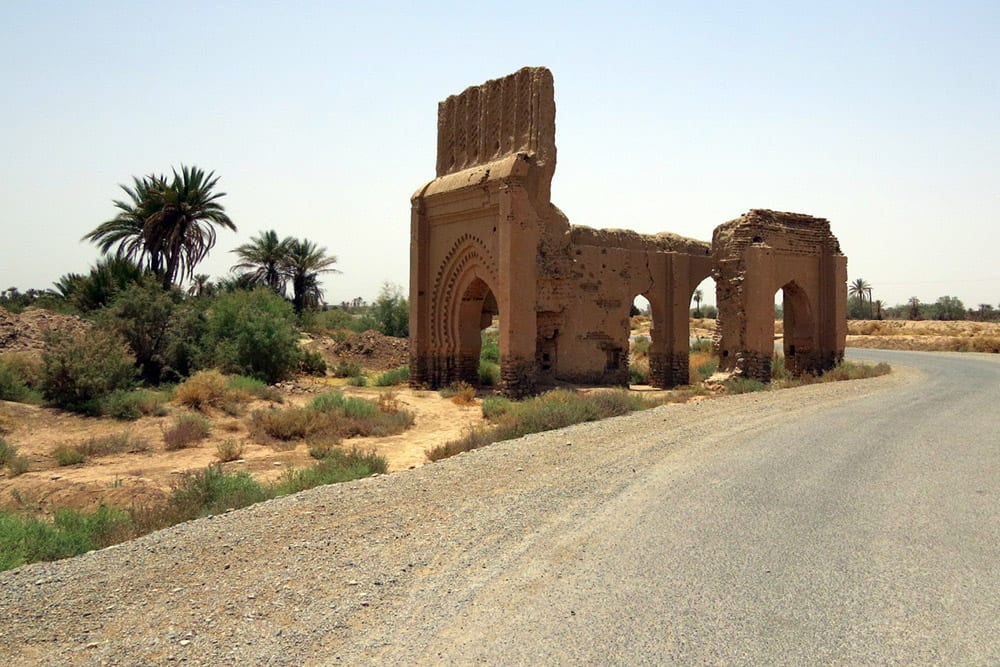
The Legendary Caravans: Life on the Sahara Road
Traveling across the Morocco Western Sahara wasn’t easy. Caravans could include hundreds of camels, loaded with goods and led by experienced Tuareg or Amazigh guides who knew the terrain like the back of their hand. A single journey from Sijilmassa to Timbuktu could take up to two months, braving:
-
Blistering heat during the day and freezing cold at night
-
Dangerous sandstorms and treacherous terrain
-
The constant need for water and shelter
-
The threat of bandits and tribal conflicts
Yet, despite the risks, these roads became sacred paths—not just for commerce, but for spiritual and cultural exchange.
Along the way, travelers rested in ksours (fortified villages), studied at desert libraries, and prayed in remote mosques. The famous Tamegroute Library, near Zagora, holds ancient manuscripts that were carried across these very sands.
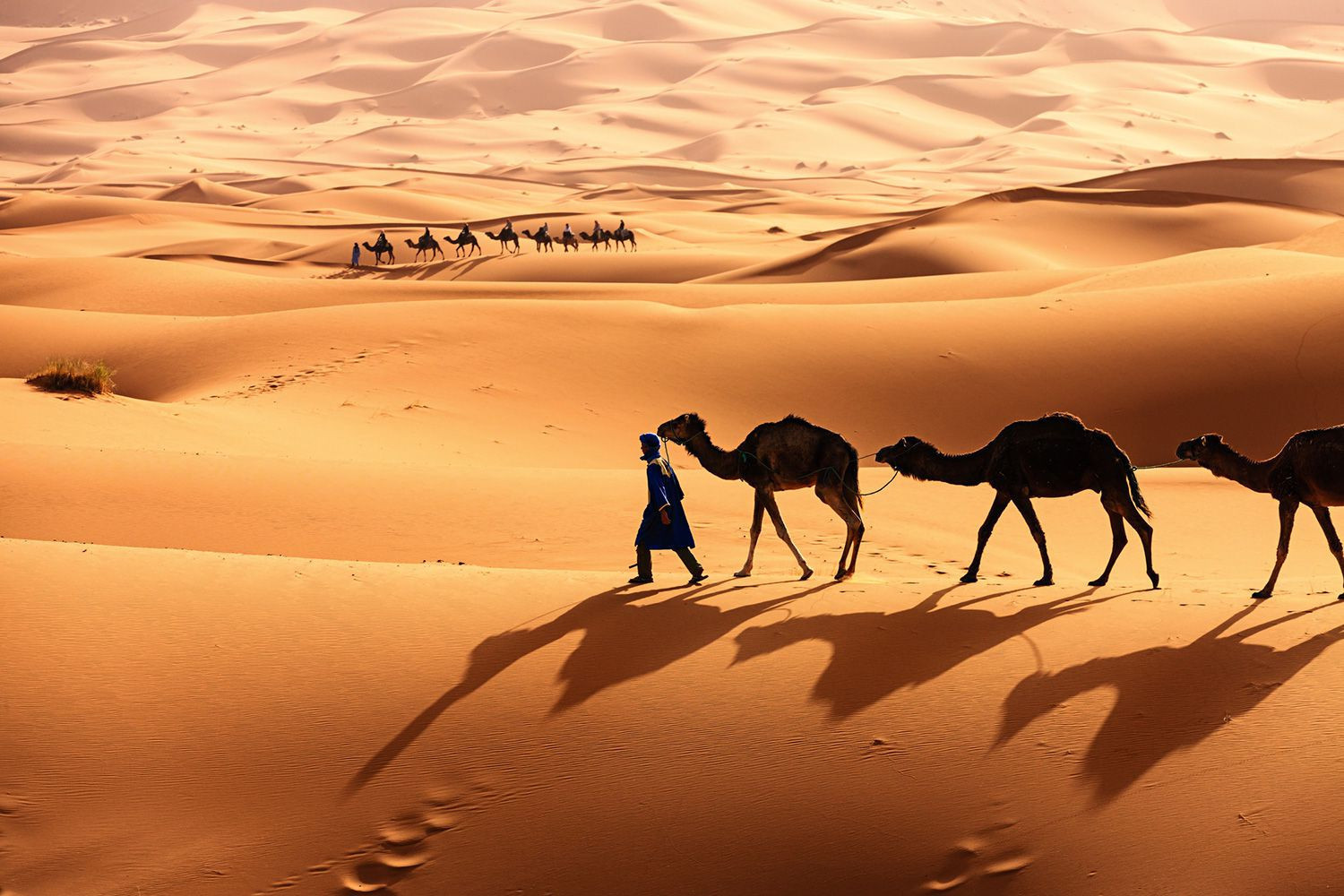
Faith in the Sand: Islam and Knowledge on the Road
The Morocco Western Sahara road was more than a trade route—it was a corridor of Islamic knowledge. As caravans moved goods, they also transported scholars, manuscripts, and ideas.
Many West African students traveled to Morocco to study in prestigious centers like the University of al-Qarawiyyin in Fez. In return, Moroccan scholars journeyed south, spreading Islamic law, mathematics, astronomy, and spiritual teachings.
Desert towns became centers of learning:
-
Smara, in the heart of Western Sahara, was once a religious hub with Islamic schools and a respected library
-
Tamegroute, with its green-glazed pottery and spiritual community, still houses thousands of ancient texts
This exchange helped build a shared cultural and religious identity that still exists today between Morocco and many sub-Saharan African nations.
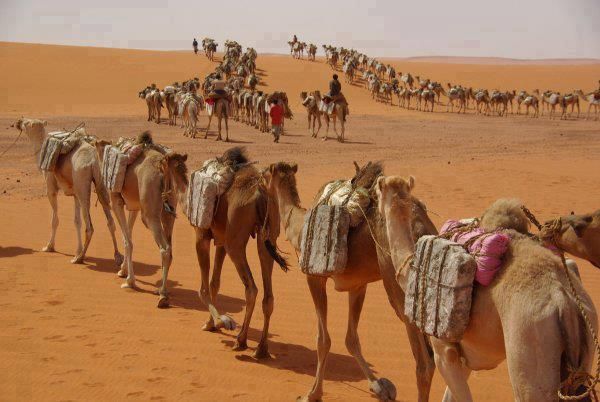
Zagora: Where the Desert Road Begins
A key town along the Morocco Western Sahara trade road is Zagora, a southern Moroccan oasis city framed by palm groves and desert peaks. Here, a sign still famously reads:
This marker refers to the time it once took a caravan to reach Timbuktu from Zagora—proof of this town’s historic importance as a caravan departure point.
Zagora also became a spiritual hub, home to the Naciria Zaouia (Sufi religious complex), and a cultural one, offering a gateway into Amazigh and Sahrawi life.
Today, it is still the starting point for many Morocco desert tours heading toward Erg Chegaga or the Drâa Valley.
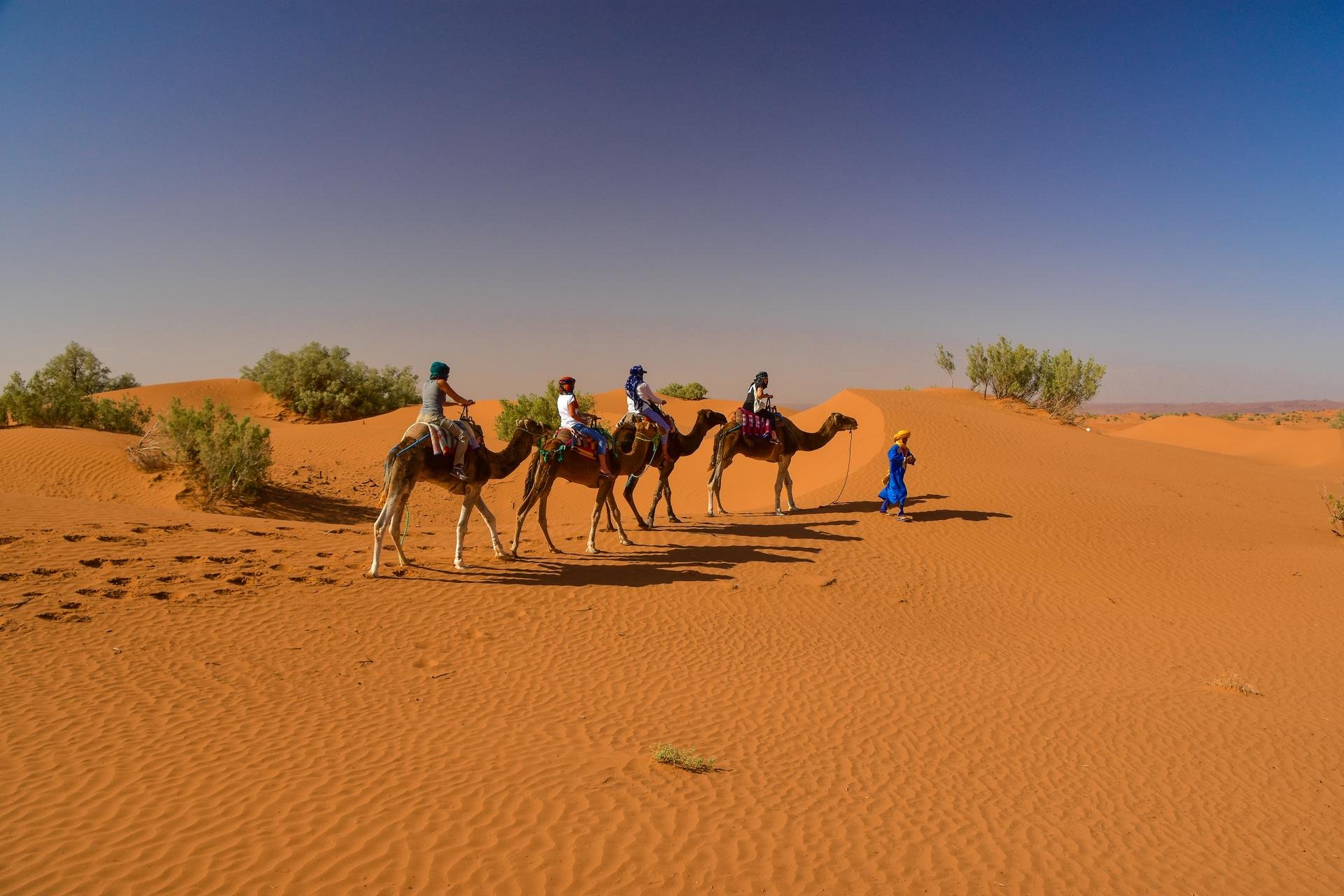
Cities of the Western Sahara: Smara, Laayoune, and Dakhla
Though often overlooked by travelers, the cities of Morocco’s Western Sahara region are rich in history and identity.
Smara
Founded in the 19th century by a Sahrawi religious leader, Smara was once a spiritual and intellectual center. Its mosque and ruins still echo with the scholarly pursuits of the past. Though damaged during colonial conflict, Smara remains a powerful symbol of Sahrawi resistance and culture.
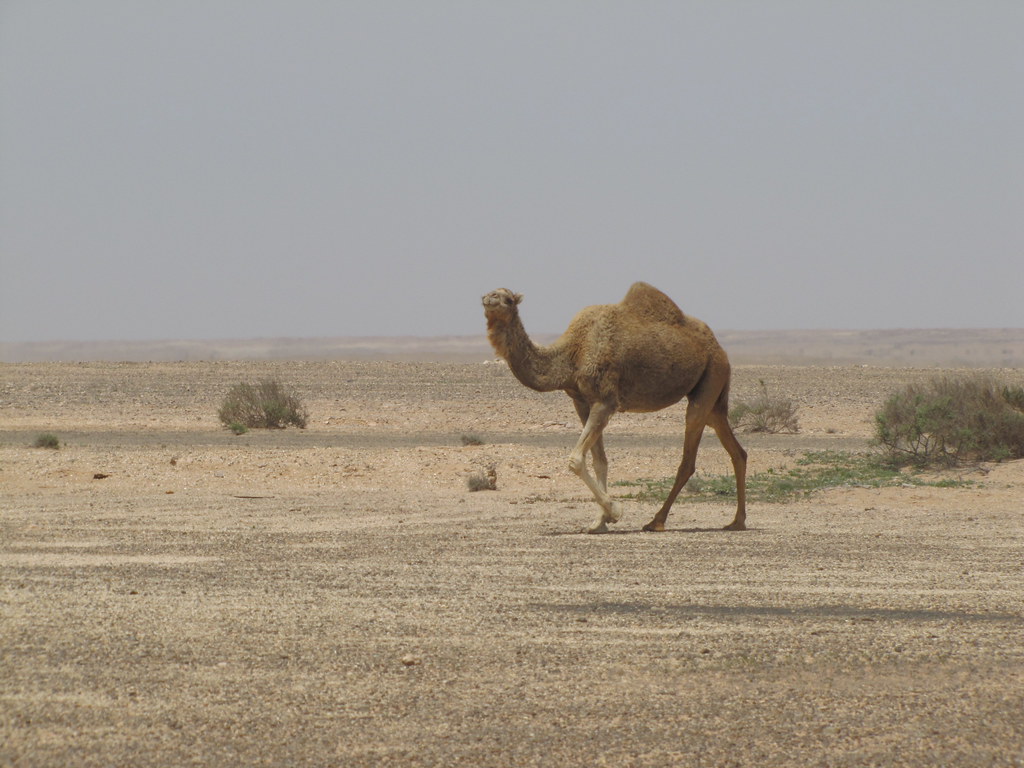
Laayoune
Laayoune, the capital of Western Sahara, is now a modern city but retains traces of its desert heritage. Once a French administrative center, it has grown into a bustling hub where Sahrawi traditions meet contemporary Moroccan life. Local markets, tea houses, and camel festivals still connect the city to its nomadic past.
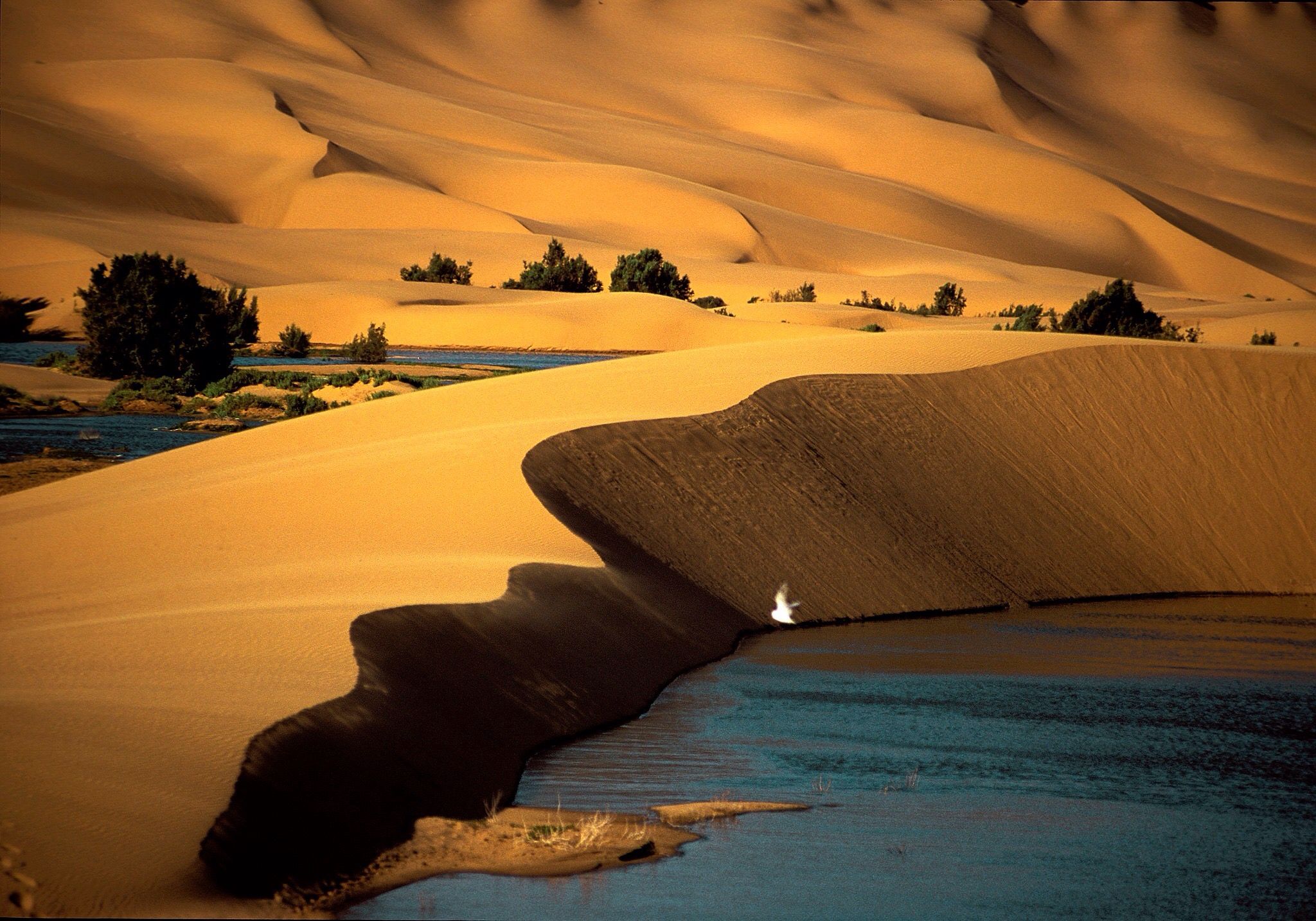
Dakhla
Located on a narrow peninsula between the desert and the Atlantic Ocean, Dakhla was historically part of the trade route that connected the desert interior to the sea. Today, it’s famous for water sports, but also for its desert surroundings, Sahrawi communities, and links to the ancient Atlantic-Sahara trade.
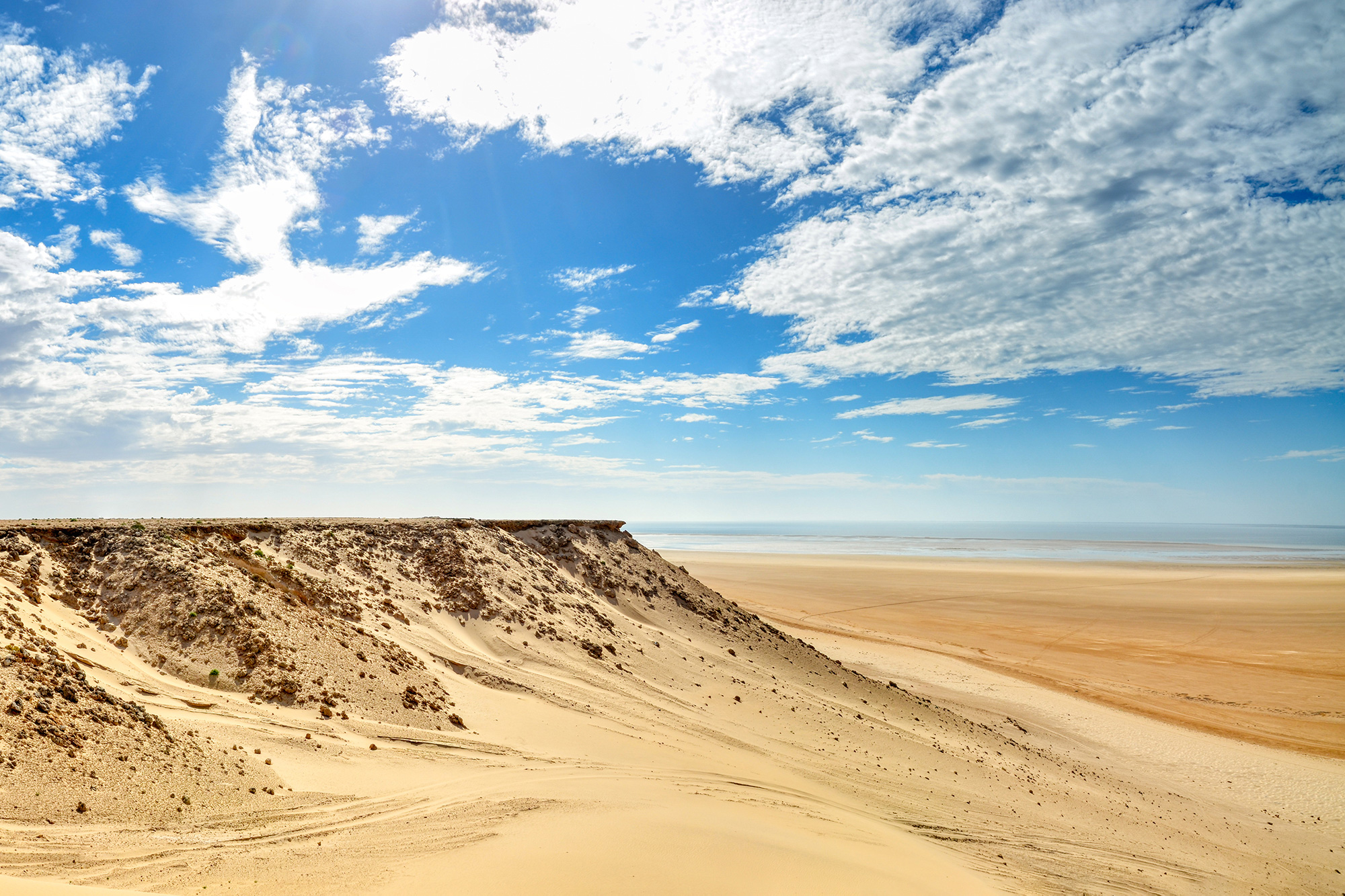
The Road Declines: From Camels to Colonial Borders
By the 16th century, things began to change. European maritime powers developed ocean trade routes that bypassed the Sahara altogether. With the rise of seaports, the importance of desert roads diminished. Later, colonial boundaries drawn by France and Spain made cross-Saharan trade even more difficult.
In the 20th century, the development of modern roads and railways in North Africa shifted transportation further. But while the caravans slowed and many routes were forgotten, the spirit of the Morocco Western Sahara road remained.
Today’s travelers still follow parts of these ancient trails—this time by 4×4, motorbike, or trekking tour.
Morocco Western Sahara Today: A Road for Adventure
Today, the Morocco Western Sahara road is reborn—not as a path for camels, but for curious travelers seeking history, silence, and the soul of the desert.
Modern routes trace ancient paths through destinations like:
-
Ouarzazate: the “Hollywood of Africa” and gateway to desert filming locations
-
Zagora: palm groves, kasbahs, and the start of the Erg Chegaga journey
-
M’Hamid: the last village before true desert wilderness
-
Erg Chegaga and Erg Lihoudi: vast, untouched dunes
-
Dakhla and Laayoune: key cities in the modern Western Sahara region
This modern road through the Moroccan Western Sahara offers more than sand and stars. It offers a connection to centuries of movement, resistance, survival, and trade.
Culture Along the Road: Echoes of the Past
Travel along these roads today, and you’ll still feel the cultural layers laid down by centuries of caravans:
-
Gnawa music, rooted in West African traditions brought north by enslaved peoples
-
Amazigh crafts, pottery, and textiles that were traded along the routes
-
Traditional desert cuisine: think spiced tagines, preserved meats, date-filled pastries, and sweet mint tea
-
Nomadic tents and hospitality, where ancient customs are still practiced by Sahrawi and Berber families
Every stop on this route is a living museum, where history, identity, and hospitality meet.
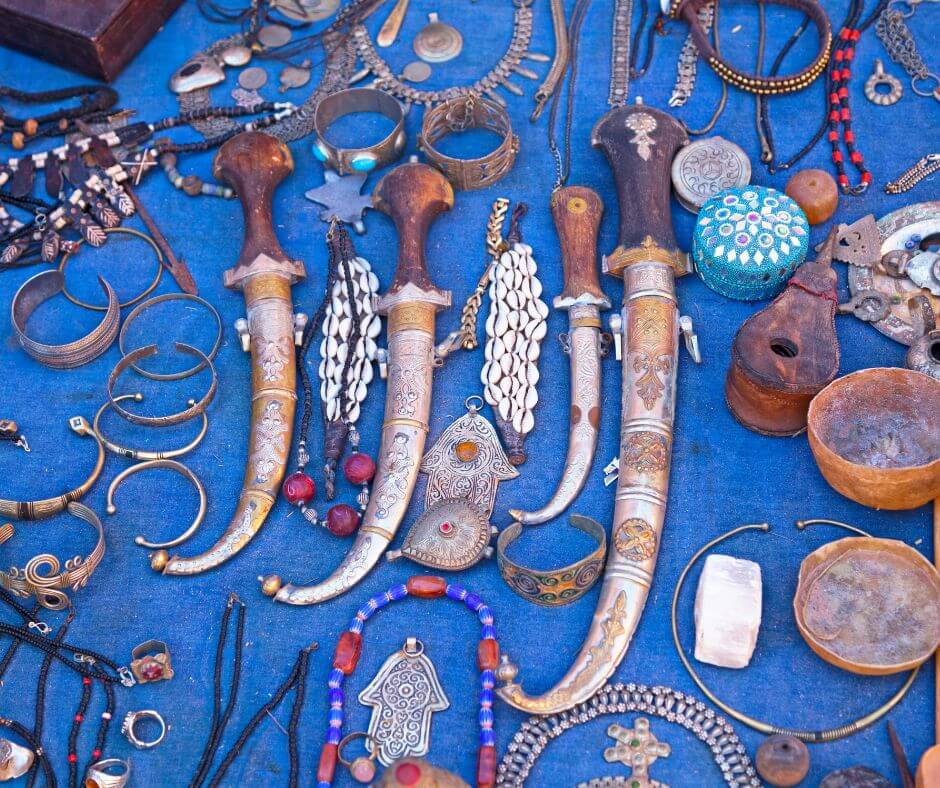
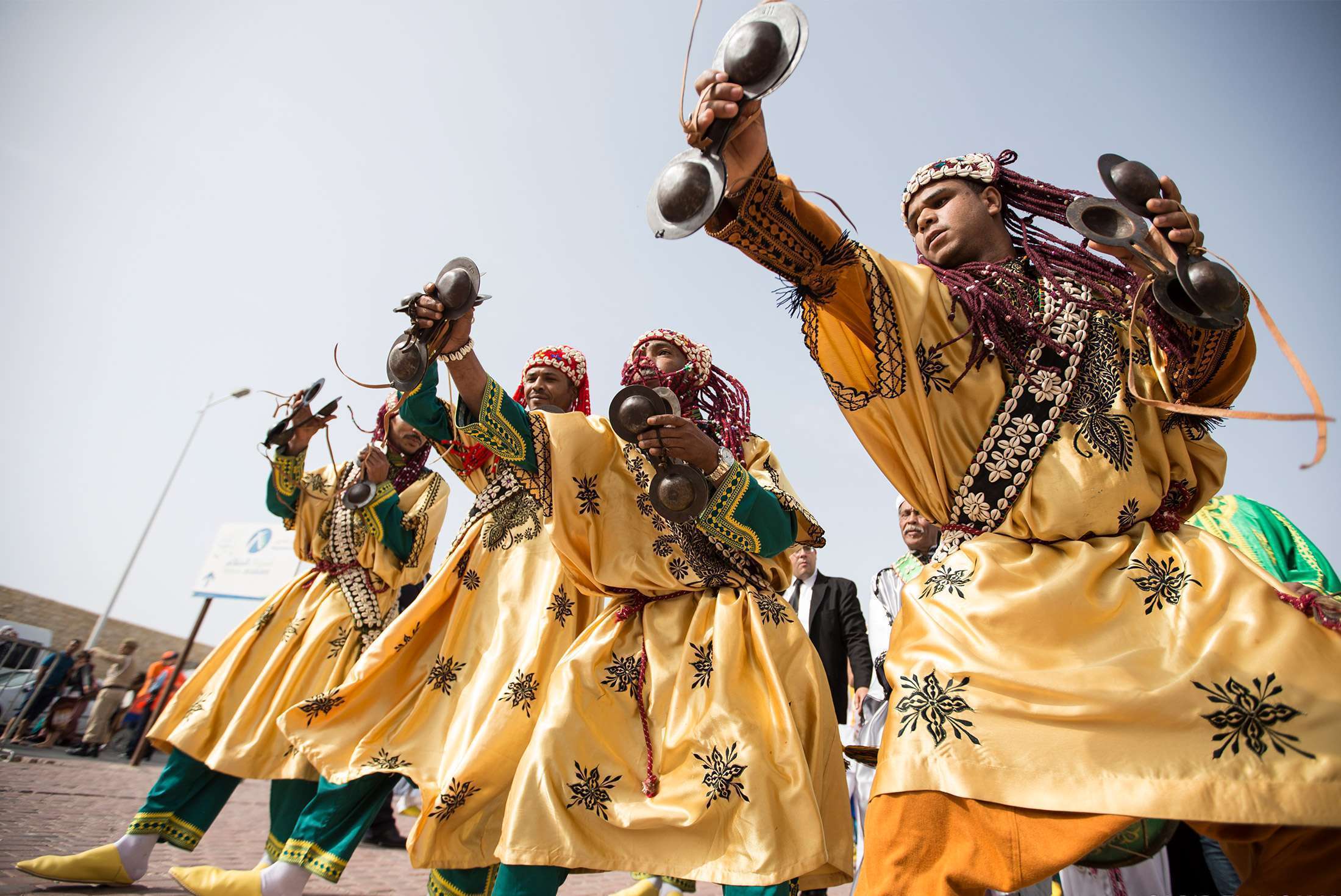
The Morocco Western Sahara road is not a forgotten relic—it’s a living story, woven into the geography of Morocco and the identity of its people. From merchants and mystics to musicians and modern travelers, this road has carried more than goods—it has carried the soul of a continent.
As you drive across dunes, explore ksars, or sleep beneath desert stars, remember: you are part of a journey that began thousands of years ago—and still continues today.
Travel the Ancient Road with Morocco Travel Road
Want to walk (or ride) the footsteps of traders and travelers from centuries ago?
Morocco Travel Road offers expertly curated tours that retrace the ancient Morocco Western Sahara routes. From the lush valleys of Dades and Drâa to the silent majesty of Erg Chegaga’s dunes, our guides take you beyond the tourist trail—into the heart of Morocco’s desert legacy.
Whether you want:
-
A short 2-day desert escape from Marrakech
-
A 5-day cultural adventure from Fez or Ouarzazate
-
A 10–14 day grand circuit across southern Morocco and Western Sahara
…we’ll design a custom trip that brings the desert’s story to life.
Book your next Morocco Western Sahara adventure with Morocco Travel Road – where every road leads to memory, meaning, and magic.
